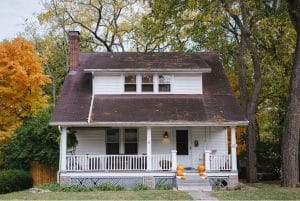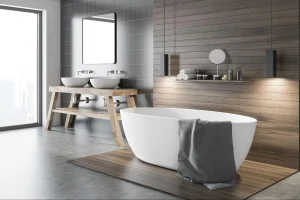A deck or patio is a nice way to add usable space to your outdoor area. It can help with your home’s resale value. It serves as a connection between your home and the outdoors. Depending on the structure, a deck or patio can help you enjoy the weather without direct exposure to the elements.
As summer fast-approaches, you might consider adding a deck or a patio to your next home remodel project so you can enjoy some fun in the sun. Here are some considerations to know before you start on a deck or patio addition for your home.
What’s the difference between a deck and a patio?
Decks and patios both provide some sort of outdoor flooring structure. Both can provide additional shade through covers, although you can also have an uncovered deck or patio if that’s more to your liking. The main differences between the two come to materials, how they are built around the house, and elevation.
Decks are made of wood and require specific treatments to be able to withstand the elements. They have to be pressure-sealed or treated, otherwise, they’ll be susceptible to wood rot and weather conditions over time. Decks can be built more easily on uneven terrain since they’re elevated by posts and attached to the house. Usually, they have guard rails. If they’re built around pools or hot tubs, the wood has the advantage of drying quickly so there is less of a concern of standing water.
Patios are paved and leveled and can be built with a variety of materials, from concrete to gravel and everything in between. If you plan on building them on a sloped surface, landscaping will be required. Unlike decks, patios can be freestanding. They’re often more durable than decks, so they tend to last longer and are cheaper to build and maintain.
What are the maintenance needs for decks and patios?
Maintenance plays an important role in deciding on home additions like decks and patios. You need to be sure the costs to care for the structure are worth the added expense with regards to your resale value. Decks need to be cleaned at a minimum of twice per year. Consider saving your biannual cleaning for after the leaves have fallen or pollen has swept in to maximize your mileage.
Pressure washing works great but can damage some surfaces. If your deck happens to be made of composite, PVC, or another plastic material, don’t power wash it. Additionally, decks need to be inspected each year for signs of rot, cracks, and loose nails. It’s a good idea to reseal every couple of years to keep it looking like new.
Patios are more heavy-duty than decks, so they require a little less maintenance. You don’t need to seal a stone patio, for example. Concrete patios need to be cleaned to get rid of the accumulation of mildew and you may need to replace a loose or cracked brick or stone, depending on the materials you use to build your patio. Keep in mind that any outdoor furniture you keep on your deck or patio needs to be cleaned as well.
What are some design considerations for decks and patios?
Before you build your deck or patio addition, think about the goal you want to achieve. Are you looking for an attractive way to incorporate a hot tub into your outdoor space? Then a wooden deck may be the route to take. Do you need that additional sun coverage? Then maybe you’d prefer a covered patio.
First, you need to determine how much space you have to build your deck or patio. It helps to mark it out with tape or stakes. If you have outdoor furniture you want to use in the desired space, be sure to lay it out beforehand so you reserve enough space for it.
People use decks and patios for a variety of needs – from poolside lounging, to a shaded space to sit on a porch swing, to seating around a fire pit. If you have an idea in mind, be sure to let your contractor know so they can best accommodate your needs.
Materials used for decks and patios.
The lower structural parts of decks are usually built using pressure-treated lumber per code requirements. However, the top deck can be built with a variety of materials. A composite deck is made of recycled plastics and wood fibers, and is durable yet soft underfoot. They’re also desirable as they don’t need to be stained or sealed. Fiberglass deck material can be painted or stained and lasts the lifetime of the house. They’re best suited for high-moisture areas as they don’t mildew, rust, or rot. That said, the most cost-effective choice for building your deck is pressure-treated wood. Such wood is injected with a solution that helps it nullify wood rot and wood-boring insects. The downside is that it needs more maintenance than composite or fiberglass and it can splinter.
Patios can be built using all sorts of materials, but some popular choices include concrete, brick, flagstone, and pavers. Concrete is economical, resilient, and does well in warm climates. It can crack if it’s used in a region with highly variable climates. Brick is strong and retains its color well. Flagstone looks nice but is often pricey and difficult to install. A nice middle ground might be pavers, which come in a wide variety of shapes, colors, and sizes and are relatively easy to install.
















